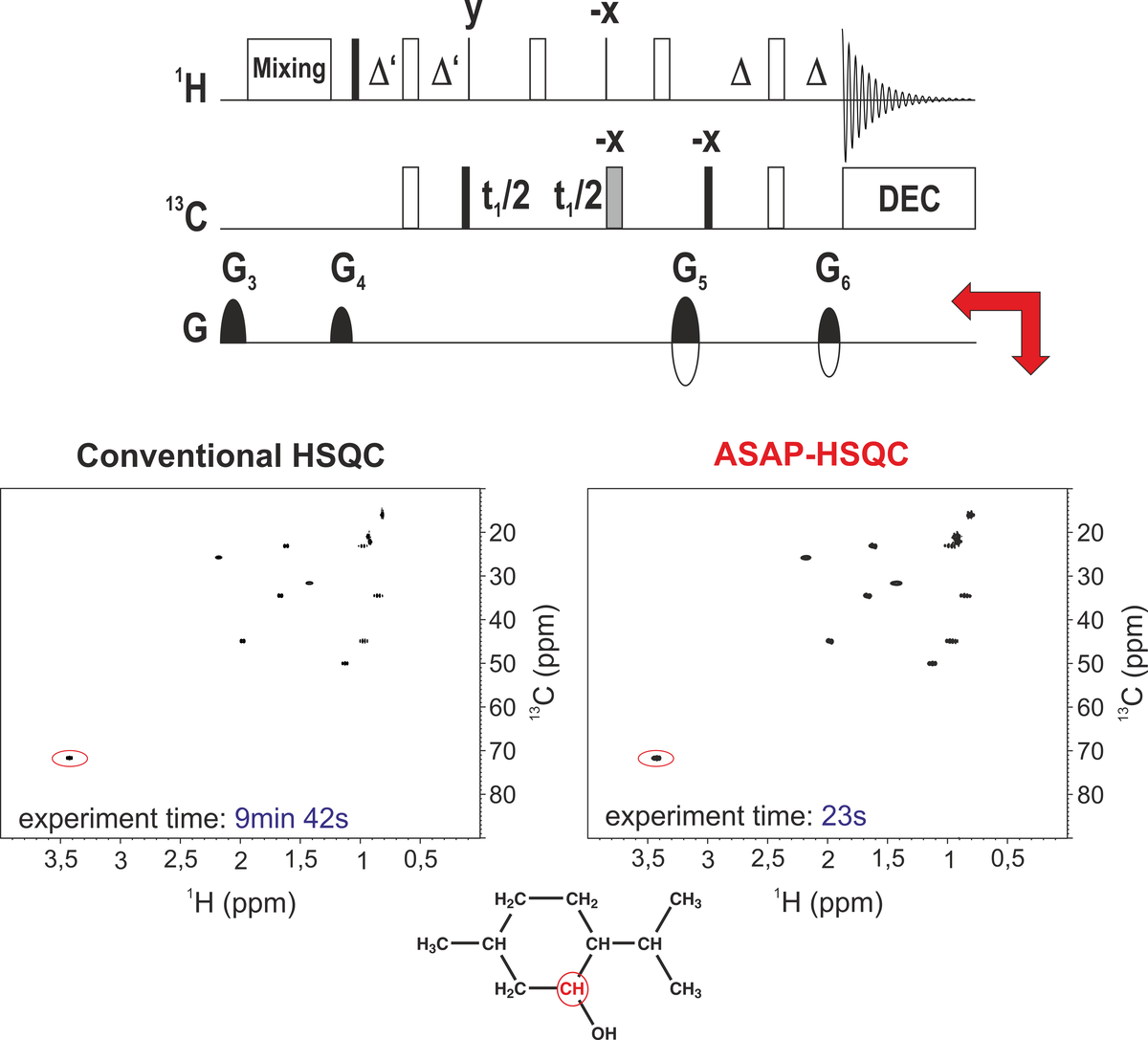Pulse Sequence Development
NMR (Nuclear Magnetic Resonance) is a versatile method which for example allows the determination of all kinds of internuclear interactions, molecular structure, spatial distribution and self-diffusion. For all these experiments different pulse sequences are required. The field of pulse programming contains the development of new experiments to acquire yet un-measured properties and the optimization of existing NMR experiments for example by providing a gain in sensitivity, improving the spectral resolution per time or speeding up the acquisition of spectra. The pulse sequence is the question we pose to the sample in the language of radio frequency (rf)-pulses. If asked properly the spin system responds, usually by creating its own rf-field. This rf-field is detected, further processed and leads to the desired information.
In multidimensional NMR experiments the signals of interacting spins are splitted along diverse frequency axes, this leads to a higher spectral dispersion. One of the most used 2D NMR experiments is the 1H-13C-HSQC (Heteronuclear Single Quantum Coherence) which shows the correlation of NMR active 13C nuclei to the directly bound protons.
One effort for example is the development of the ASAP-HSQC, which allows the acquisition of such HSQC spectra at natural abundance in only a couple of seconds. A conventional HSQC, as used in routine NMR needs several minutes to obtain the same result. Figure 1 shows the corresponding pulse sequence of the experiment and the resulting HSQC spectrum of menthol as a testing molecule, which is acquired in only 23s. For comparison the HSQC spectrum which is derived in 9min 42s using the conventional HSQC sequence is also shown.
Besides deriving these pulse sequences and implementing them, the application of the experiments to target molecules and mixtures to demonstrate the efficiency and point out the benefits is a major part the of projects.

